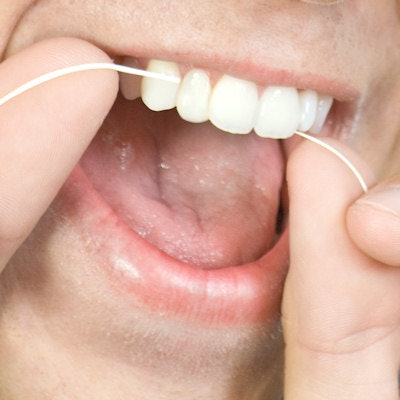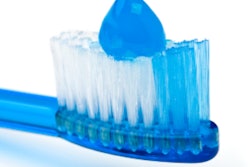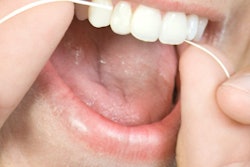
Flossing is an important component of personal oral healthcare. However, getting patients to floss regularly has been shown to be difficult. Researchers wanted to find out if patients were more comfortable using dental floss or a microdroplet device and which method was more successful at reducing plaque and gingivitis.
They found that patients were more comfortable with the microdroplet devices, which use a rapid burst of air and water droplets to disrupt the biofilm from between the teeth and along the gumline, and the devices were also more effective than floss at reducing plaque. They presented their study results in a poster at the 2017 International Association of Dental Research (IADR) annual meeting in San Francisco.
"Dental floss remains the first choice for interdental cleaning, yet the microdroplet device offers an effective and well-accepted alternative for patients who fail the proper flossing routine," the study authors wrote.
The poster was presented by Michael Noack, Dr med dent, of the department of operative dentistry and periodontology at the Center of Dental Medicine at the University of Cologne in Germany.
Plaque and gingivitis
Interdental cleaning is an important component of an oral healthcare routine. Patient compliance remains a challenge, however. With the advent of so-called microdroplet devices, patients have an alternative to using dental floss to clean between their teeth.
“Dental floss remains the first choice for interdental cleaning, yet the microdroplet device offers an effective and well-accepted alternative for patients.”
Researchers from Germany wanted to compare floss to a commercially available microdroplet device in terms of each method's ability to reduce plaque and gingivitis. They also asked patients which method they were more comfortable using and which method they were more likely to continue to use.
The researchers recruited 60 patients who had an irregular interdental home cleaning regime. These patients were randomly assigned to one of two groups: a control group that used dental floss (20 patients) and a test group that used a Philips Sonicare AirFloss Ultra (40 patients) for four weeks.
The researchers recorded each patient's bleeding and plaque indexes and also the amount of gingival crevicular fluid at baseline and reassessment. At the second appointment, participants completed a questionnaire about which interdental option they were assigned.
Both groups showed reduced gingivitis (p < 0.05), but the microdroplet device was more effective at reducing plaque (p = 0.003). However, the amount of gingival crevicular fluid remained the same in both groups.
Interestingly, while patient-reported comfort of use was greater with the microdroplet device, the patient-reported effectiveness was greater with dental floss, according to the study authors. More than 80% of those who used the microdroplet device said they would continue to use it daily.
Acceptance
As the study only included 60 participants, further research with a larger number of participants is needed, according to the authors.
They concluded that either a microdroplet device or flossing can reduce gingivitis and plaque.
However, "acceptance regarding comfort of use is higher with the microdroplet device," they noted.



















